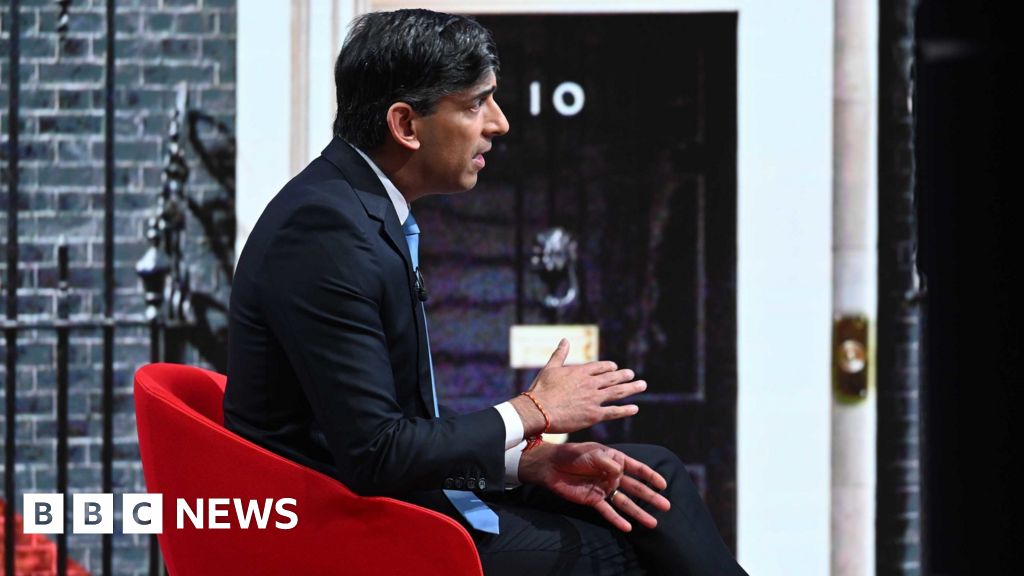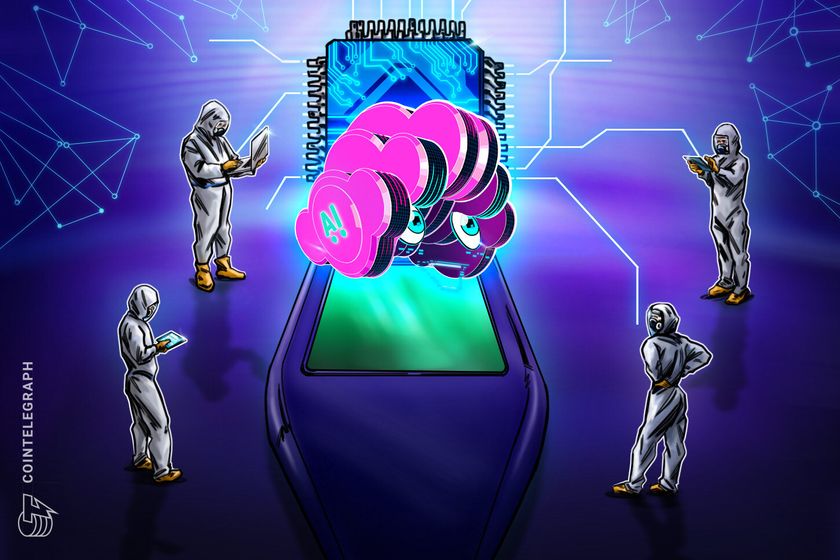Rick Roque and Andrew Maas on what AI can and can’t solve
Rick Roque and Andrew Maas talk about the limits and potential of AI in the mortgage business.

HousingWire CEO Clayton Collins sat down with Rick Roque, executive vice president of retail growth and strategy at Sierra Pacific Mortgage and Andrew Maas, co-founder and CEO of Pointable, to talk about AI on his PowerHouse podcast. Roque and Maas will be speaking at HousingWire’s AI Summit on July 23. This conversation has been edited for length and clarity, but you can listen to the whole thing here.
Clayton Collins: What does AI mean for the world?
Andrew Maas: AI refers to a broad category of technologies that can be used for a lot of different things. And sometimes when people hear AI, they think of a single sentient intelligence, or what we would call sort of general AI, or hard AI. For the most part, people like me are not thinking about that day to day — we don’t think that that’s very close. Systems like ChatGPT — it’s become clear over the last two years that we’re not seeing the sort of rapid progress of something that’s going to become as smart as a five -ear old anytime soon. In terms of general reasoning and common sense, those are the things that are very hard.
What is true is these language models are very good at fooling us humans… we want to believe that they’re smart, and they’re good as little chatbots. And increasingly, we’re now engineering these different components around them and onto them that are making them more useful and more reliable in terms of factual accuracy, interfacing with the outside world.
But, in terms of broad AI, think of it as sort of adopting the internet almost. There wasn’t one way that a business said, here’s how we’re going to use the internet to improve our business. And AI, especially the kind of new AI systems that we can now start to build and adopt, you should think of it in the same way, where it’s not that there’s going to be a single AI agent that I hire instead of an employee and it’s the perfect employee and it sells every mortgage to every person ever. No, it’s that there’s 100 different little use cases.
Rick Roque: Our industry …tends to be a bit antiquated. We tend to be overly focused on human resources,and on repeated tasks that might prevent scale, or that might introduce inaccuracies or aspects of errors that in our business mean added margin. Like we don’t even know how many inefficiencies there are in the mortgage chain so we just price it out, right? Which is why so many innovations like AI or blockchain help alleviate the aspects of doubt around the quality of what it is that you’re producing. And as a result, your need to price into the mortgage pricing throughout the capital markets chain gets diminished, because you know you have a greater degree of confidence in what you’re receiving.
When I was on the leadership team at Cross Country, I said, this is really a necessary conversation that not just Cross Country, but really all lenders in the industry need to have. Because it’s clear that the great divide that’s coming in the business is that lenders that leverage AI, and this radical adjustment of efficiency into their pipeline, this is going to be the difference between businesses that leveraged fax and couriers versus businesses that adopted email. I genuinely believe the efficiencies will be that dramatic, both in pricing and the consumer experience, and in profitability for the lender, will be that stark of a contrast with between those who adopt and those who don’t.
CC: What do you see companies building right now?
AM: That’s where there’s a huge amount of upheaval right now. Because basically, where we are today, there is a tremendous amount of new use cases which are enabled by the technology advances and the large public models that are available with friendly commercial licensees now. And we have probably five years of work to do, honestly, in terms of enterprise adoption and integration — even assuming that everybody’s onboard, everybody wants to do it and depending on regulatory stuff.
Right now, in general, my advice is to look very hard at vendors you’re working with, because they might be building something for the very first time or promising you something that they know is possible, but they haven’t actually built. It’s just that kind of time.
CC: You mentioned models are trained off of public data. Are there two different AI marketplaces that are emerging — like models that are trained around proprietary or in-house datasets versus models that are trained around publicly available information on the internet?
AM: That’s what people thought might emerge two years ago, and it didn’t actually go that way. Originally, as chatGPT was starting to come out, there was a bunch of buzz that every large enterprise would use all of their internal data and train a custom version of those types of models and it would just solve a bunch of problems. And what we found is, if you just take all your internal data and train one of these big models on your private data, you end up with something that kind of talks a little more like your private data talks, but it doesn’t actually solve some of the most valuable use cases for you. You still have to engineer components on.
And so more recently, I think the consensus that’s emerging is you think of the language model as kind of like a paintbrush — I might have a paintbrush from public data that’s pretty good at talking about mortgage and financial terms and those sorts of things. If we use some of the publicly available GPT models, they can talk about mortgage terms pretty well. They don’t actually integrate in any useful way with your back-end systems or your structured data to say: here’s the mortgages that I offer and here are my terms. And so that’s the extra engineering work you’re going to have to do, whether you have a private model or you’re using a public model.
As a result, what we see now is people doing the engineering work to integrate their proprietary workflows, their proprietary data, but not necessarily training one of these LLMs themselves.
CC: How are executives starting to lay the groundwork for how this impacts their businesses?
AM: Something I’ve heard a lot in the enterprise AI discussion circuit recently is: when and where is the enterprise value for all of this AI buzz going to emerge? Because it’s been two years since we had a bunch of hype around ChatGPT. Some executives spent a bunch of money on projects that were poorly scoped. And, for example, built one of these very large private models that we were just talking about, and then they deployed it internally and they found, okay, we still have a bunch of use cases that are not solved by this model. Now, how do we actually go solve those use cases?
And some of those might be out of reach, because they’re a hard problem that the language modeling piece doesn’t solve. And so we saw a ton of buzz, a ton of investment, a ton of startups get founded and product ideas kick off, and we’re now trying to pick through: who’s actually doing a process with AI that’s saving money or creating new revenue? And now, it’s getting into more of the details. So executives that I’ve seen more recently, they’re not thinking of how do I invest in AI? Instead, they’re thinking: what are the use cases where AI is going to be really transformative? And how is that impacting my bottom line? Or what is the ROI? And I think that’s the right starting point.
CC: Rick, what are you hearing in mortgage boardrooms? What conversations are being had about AI and the executive circles that you run in?
RR: I’d say complete confusion. The focus in all boardrooms is on production… There’s a tremendous amount of focus on the impending winner come October, November, December. Now the higher you get in the enterprise class and mortgage lenders, there is a focus that in 2025 and 2026 demand is, without a doubt, becoming extreme — the demand for housing is percolating to alarming proportions. We all see the opportunity in production volume in 2025 and 2026 and 2027, which isn’t too far away.
And so, the larger you get, in some of those conversations I’m a part of, whether you’re a New American Funding or an NFM or a Sierra Pacific, the conversation is: how do we triple our production without adding any overhead? What do we need to do? Either outsourcing or leveraging AI — I think AI is really the next innovation. The last 10 years, the focus for a lot of us on the enterprise side has been: can we outsource to India or Philippines to reduce our cost of production?
CC: It’s been a theme on this show for years. How do we build an accordion-type cost structure that can fluctuate with changes in volume, whether it be purchase or refi volume, that doesn’t mean that you have to go out and scale up with thousands of new processors and underwriters and ops talent every time we see an inflow of volume?
RR: And the problem is, outsourcing doesn’t change the paradigm, because you’re still throwing hundreds of people at it. At AFN, we had, I think 400 or 500 employees in the Philippines. I mean, we’ll easily scale that. I know Cross Country will easily scale that, but again, you’re not really changing the paradigm, you’re just adding cheaper labor. You’re adding the same bodies, it’s just that those bodies aren’t living in the United States. You’re applying incredibly talented resources at a third of the cost or 25% of the cost in the Philippines. I think AI completely shatters the paradigm.
CC: What makes AI different? And how does the housing executive mentality have to change to actually build a better cost structure?
RR: Let me just chime in and say that I disagree with your point that it hasn’t introduced efficiencies, because it has — the problem is the regulatory environment, which wasn’t really built for automation. It wasn’t built around how to streamline efficiencies in compliance, other than maybe audits. OCR solutions were kind of the big thing in 2008, 2009, 2010 ,2011. But if it didn’t correct it 100% of the time, then it really was worthless, because you still had to go back and preview with everything. It’s almost like the way Siri — if I voice text today and I’m driving, it really doesn’t help all that much. Because now I’m proofing everything that incorrectly translated from voice to text. And now I’m probably at greater risk as I’m driving.
So I would say what technology did is provide a tremendous amount of efficiencies where it was designed…It had nothing to do with our ability to close loans faster. AI can change that.
What's Your Reaction?
































/cdn.vox-cdn.com/uploads/chorus_asset/file/24522989/H_Herrera_keyboard_buying_guide.jpg)
/cdn.vox-cdn.com/uploads/chorus_asset/file/25255195/246965_vision_pro_VPavic_0034.jpg)



















































































